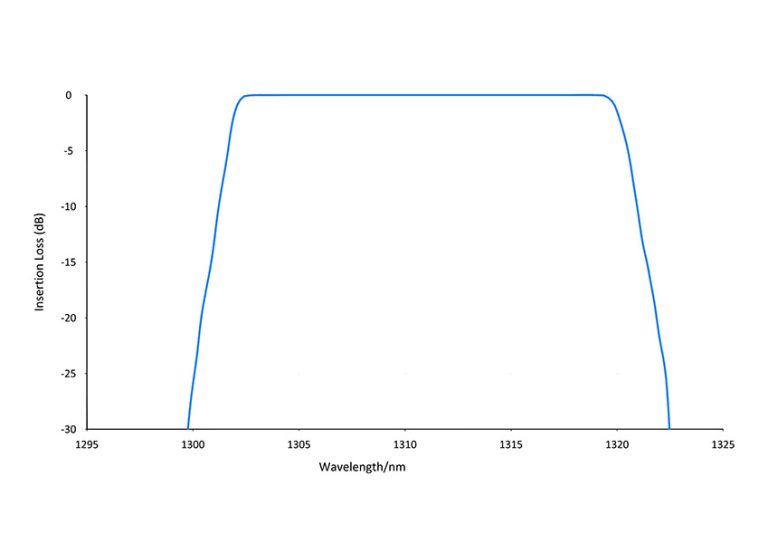CWDW Filter
FAQs
CWDM optical filter is a Coarse Wavelength Division Multiplexing filter, an optical device used in fiber optic communication systems to select or separate specific wavelengths in CWDM technology. CWDM filters achieve multiplexing and demultiplexing of multi-wavelength signals through precise wavelength selection.
CWDM filters are designed based on wavelength-selective optical principles. They use multilayer thin-film interference to combine multiple optical signals of different wavelengths into a single fiber, and to separate the mixed signals by wavelength to different receiving ends.
According to ITU-T standards, CWDM systems typically support 18 wavelength channels, covering the range from 1270 nm to 1610 nm. The standard channels are 1271 nm, 1291 nm, 1311 nm… to 1611 nm, with a 20 nm spacing. In practical applications, commonly used channels are concentrated in the 1471–1611 nm range due to the low-loss characteristics of optical fiber in the O-band (1260–1360 nm) and C-band (1530–1565 nm).
When selecting a CWDM filter, it’s important to match the center wavelength with the CWDM channel. The passband width is typically ±6.5–13 nm, ensuring the target wavelength passes through completely while suppressing adjacent channels. Lower insertion loss is preferred, and higher isolation ensures better suppression of non-target wavelengths, minimizing crosstalk.
In fiber optic communication systems, optical filters are core components in WDM technology. They enable:
-
Multiplexing: Combining multi-wavelength signals to increase transmission capacity, allowing a single fiber to carry tens to hundreds of Tbps of data.
-
Signal routing: Allocating paths based on wavelength in optical networks, enabling flexible optical cross-connections (OXC).
-
Noise suppression: Filtering out ASE noise from amplifiers or unrelated wavelengths, improving signal-to-noise ratio (SNR).
-
Wavelength management: In dynamically reconfigurable networks (ROADMs), enabling dynamic add/drop and scheduling of wavelengths.


